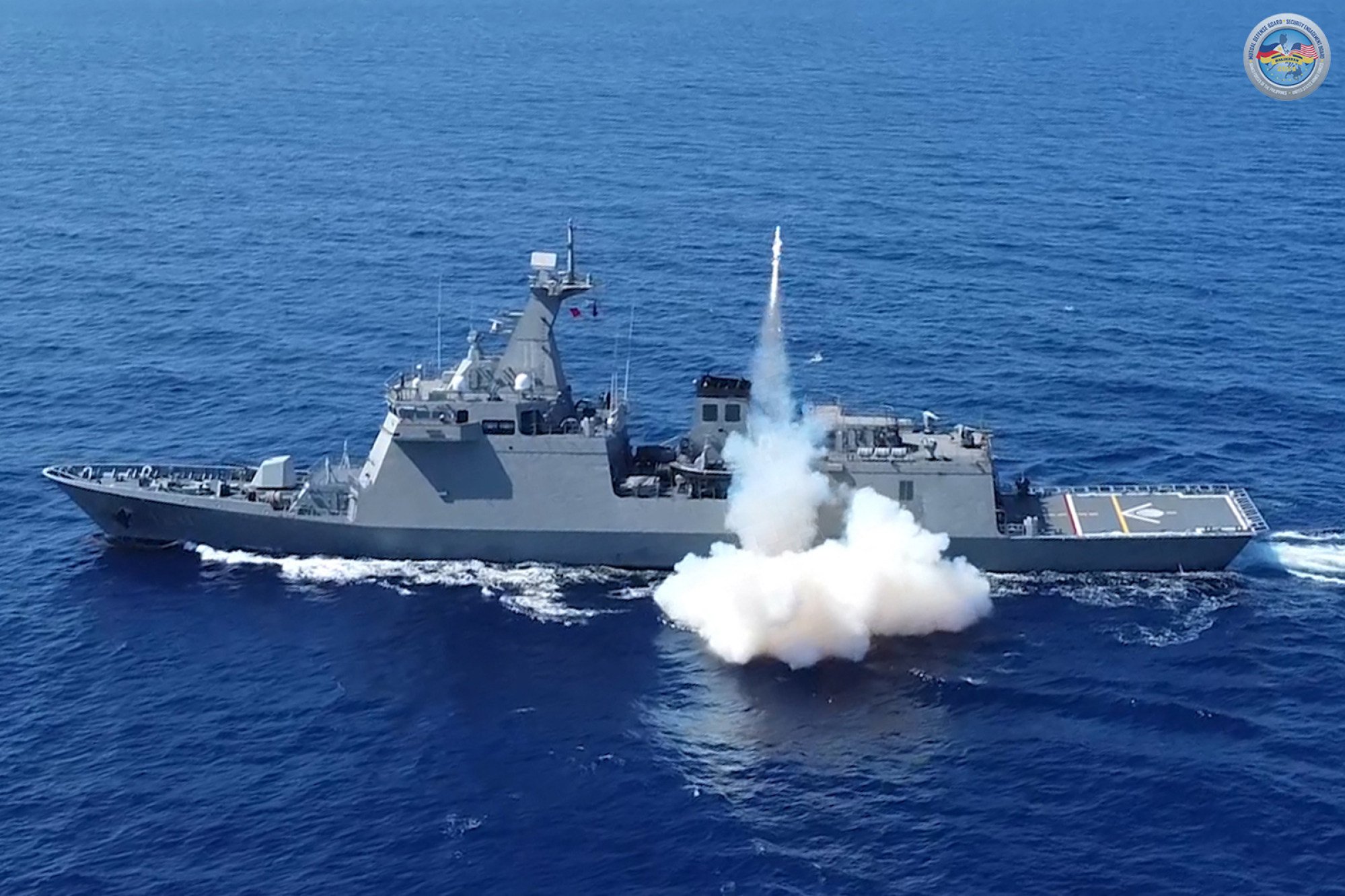Philippines' US Missile System: A Detailed Explanation And China's Reaction

Table of Contents
Understanding the Philippines' US Missile System Deployment
Types of Missiles and Their Capabilities
The exact types of missiles deployed as part of the Philippines US missile system remain partially undisclosed for security reasons. However, based on available information and the nature of the agreement, the system likely includes a mix of advanced defense systems designed to counter various threats. This could encompass:
- Ballistic Missiles: Capable of long-range strikes against land-based targets, offering a significant deterrent against potential aggressors. Their range and accuracy contribute to enhanced territorial defense.
- Cruise Missiles: Designed for precision strikes against maritime and land targets, offering a versatile capability for both offensive and defensive operations. These missiles boast advanced guidance systems for high accuracy.
- Advanced Air Defense Systems: These systems provide crucial protection against air-based threats, bolstering the Philippines’ ability to defend its airspace. This often includes radar systems, interceptor missiles, and command and control infrastructure.
These advanced military technologies significantly enhance the Philippines’ ability to defend its territorial waters and airspace, offering a more robust response capability than previously available.
Strategic Locations and Deployment Strategy
The geographical locations chosen for the Philippines US missile system deployment are strategically vital. Sites are likely positioned to provide overlapping coverage of key areas, particularly those within the South China Sea, a region of significant geopolitical contention. This strategic location allows for effective monitoring and response capabilities.
The strategic rationale hinges on several factors:
- Deterrence: The visible presence of a sophisticated missile defense system acts as a powerful deterrent against potential aggression from neighboring countries.
- Enhanced Surveillance: The system's advanced radar capabilities contribute to enhanced surveillance of the South China Sea, providing early warning of potential threats.
- Regional Stability: While potentially raising tensions, the aim is to ultimately contribute to regional stability by deterring actions that could lead to conflict. This strengthens the Philippines' position in regional maritime security discussions.
Geopolitical Implications of the Philippines' US Missile System
Enhanced Deterrence against Potential Threats
The deployment significantly strengthens the Philippines' military strength and defense posture. The increased defensive capabilities offer a credible deterrent against potential aggression, altering the regional balance of power in the South China Sea. This heightened deterrence:
- Reduces Risk of Invasion: The advanced missile systems make a direct attack on the Philippines significantly riskier.
- Strengthens Negotiation Position: The enhanced military capability gives the Philippines a stronger negotiating position in regional disputes.
- Promotes Stability (Arguably): By deterring aggression, the deployment aims, at least in theory, to foster greater stability in the region.
However, it’s crucial to acknowledge the potential for miscalculation and escalation.
Strengthening the US-Philippines Alliance
The deployment underscores the deepening US-Philippines alliance. This significant military cooperation:
- Reinforces Mutual Security Commitments: The joint effort demonstrates a concrete commitment to mutual defense and security cooperation.
- Signals US Support: It reassures the Philippines of ongoing US support in the face of regional challenges.
- Impacts Regional Alliances: The deployment shapes the regional security landscape, influencing other alliances and partnerships.
This strengthened relationship has broader implications for US foreign policy in the Asia-Pacific region, signaling a continued commitment to the security of its allies.
China's Reaction to the Philippines' US Missile System
Official Statements and Diplomatic Responses
China has consistently voiced strong opposition to the Philippines US missile system, viewing it as a provocation and a threat to regional stability. Official statements from Beijing have:
- Accused the US and Philippines of escalating tensions: China frames the deployment as a destabilizing act that undermines regional peace and security.
- Warned of potential consequences: The warnings often include unspecified retaliatory measures, increasing the potential for diplomatic tension.
- Demanded the withdrawal of the missile system: China's diplomatic efforts focus on urging the Philippines to reconsider its decision and remove the system.
These statements highlight the significant diplomatic challenges posed by the deployment.
Military Posturing and Potential Escalation
China's response is likely to involve increased military activity in the South China Sea, adding to existing tensions. Possible responses include:
- Increased naval patrols: More frequent and assertive patrols around the disputed areas could be expected.
- Enhanced air patrols: A greater air presence in the region could be used to demonstrate military might.
- Cyber warfare: Though less visible, cyber attacks might be employed to disrupt or gather intelligence.
These actions highlight the potential for further escalation and the delicate situation in the region. The risk of miscalculation and accidental conflict remains high.
Conclusion
The deployment of a US missile system in the Philippines represents a significant development with far-reaching implications for regional security and the balance of power in the South China Sea. This move significantly enhances the Philippines' defense capabilities and strengthens its alliance with the US, while simultaneously escalating tensions with China. Understanding the nuances of the "Philippines US missile system" is crucial for comprehending the evolving geopolitical landscape of the region.
Call to Action: Stay informed on the evolving situation surrounding the Philippines US missile system and its impact on regional stability. Continue to follow our updates for further analysis and insights into this crucial development.

Featured Posts
-
 Meurtre D Aramburu La Fuite Continue Pour Les Suspects D Extreme Droite
May 20, 2025
Meurtre D Aramburu La Fuite Continue Pour Les Suspects D Extreme Droite
May 20, 2025 -
 Biografiya Mirry Andreevoy Put K Uspekhu V Mire Bolshogo Tennisa
May 20, 2025
Biografiya Mirry Andreevoy Put K Uspekhu V Mire Bolshogo Tennisa
May 20, 2025 -
 Dusan Tadic In Fenerbahce Deki Etkisi Tarihe Gecen Anlar
May 20, 2025
Dusan Tadic In Fenerbahce Deki Etkisi Tarihe Gecen Anlar
May 20, 2025 -
 Premijera Jutarnji List Donosi Popis Svih Slavnih Gostiju
May 20, 2025
Premijera Jutarnji List Donosi Popis Svih Slavnih Gostiju
May 20, 2025 -
 Snl Celebrates 50 Years With A Historic Season Finale
May 20, 2025
Snl Celebrates 50 Years With A Historic Season Finale
May 20, 2025
